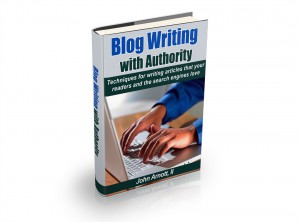 Creating a successful blog from scratch is no easy task. The first step is to plan your content strategy, which involves crafting relevant posts. Keep reading to learn the elements of the “perfect” blog post.
Creating a successful blog from scratch is no easy task. The first step is to plan your content strategy, which involves crafting relevant posts. Keep reading to learn the elements of the “perfect” blog post.
Captivating Title
A good blog post should have a short and concise title (headline) that captures the reader’s attention. The title is essentially your one and only chance to convince visitors to click into your post. If it’s plain, boring and/or overly generic, they may skip over your post and click on someone else’s that looks more interesting.
So when crafting your blog posts, use unique titles that really strike a visceral cord with your visitors. One idea is to ask a question in the title, or you can use descriptive adjectives to better convey the meaning of your post. Click for more tips on writing powerful blog titles.
More Than Just Text
Don’t make the mistake of creating pure-text blog posts. While this may seem like a good idea, it lacks the flair and depth of blog posts containing rich media. So, try to get into the habit of including at least one relevant image or video in each post. Even if you don’t have any relevant videos on hand, you can always embed a YouTube video. Just remember to avoid embedding videos that your competitors have posted, as you don’t want to send free traffic their way.
Make it Personal
One of the distinguishing characteristics of blogs is their personal nature. Traditional websites are often commercialized to the point where it breaks down the relationship between the author and the reader. Blogs differ in the sense that they are typically written from an author’s perspective, creating a more personal relationship with the reader. You should embrace this characteristic with your blog posts, using wording such as you, we, and our — your blog should sound as if you’re giving advice or conversing with a friend or colleague.
Encourage Discussions
A good blog post should also encourage discussions. In other words, you should entice visitors to share their opinions or knowledge on the subject. Depending on which blogging platform you are using, it may already have a built-in commenting feature for this very purpose. Ask a question so your readers feel inclined to respond. Try to respond to their comments if it makes sense.
Write for Readers, Not Search Engines
If you are trying to achieve a top search ranking for your blog’s target keywords, you may feel inclined to stuff those keywords into new posts. Unless it’s weaved in a natural, seamless manner, this may come back to haunt you in the long run. Sound hard? If you’re writing about a topic, this is easier than it might sound because you’ll naturally include relevant keywords. Following this tactic will encourage higher search rankings by promoting a lower bounce rate and higher percentage of returning visits.
Have any other blogging tips that you would like to share with our readers? Let us know in the comments section below!


A lot of first time bloggers feel that they have to “create” a voice for their blog when, really, the best blogs are written in the author’s natural conversational tone and are, thus, more approachable.
Before I sit down to write a blog post I always go to the news sites that specialize in whatever topic I am featuring that day to see what the latest innovations or developments might be in order to keep my material as current and exciting as possible.